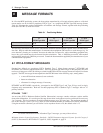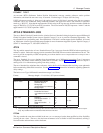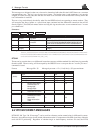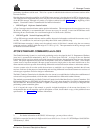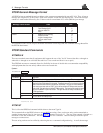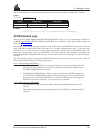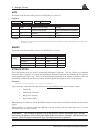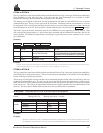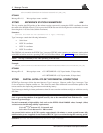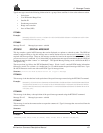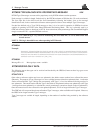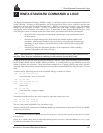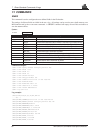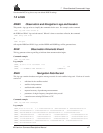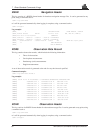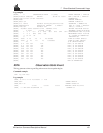
6 Message Formats
42 MiLLennium Command Descriptions Manual
567C7F5B69796F40547F73595557555546*51[CR][LF]
RTCM1B
Message ID = 10 Message byte count = variable
RTCM3 REFERENCE STATION PARAMETERS RTK
This log contains the GPS position of the reference station expressed in rectangular ECEF coordinates based on
the center of the WGS84 ellipsoid. This log uses four RTCM data words following the two-word header, for a total
frame length of six 30 bit words (180 bits maximum).
Structure:
(Follows the RTCM SC-104 Standard for a Type 3 message)
Type 3 messages contain the following information:
• Scale factor
• ECEF X-coordinate
• ECEF Y-coordinate
• ECEF Z-coordinate
The GPSCard only transmits the RTCM Type 3 message (RTCM3) when operating as a reference station paired
with GPSCard remote receivers operating in RT-20 Carrier Phase Mode. (See Appendix A for more information.)
NOTE: This log is intended for use when operating in RT-20 mode.
Example:
$RTCM3,597E7C7F7B76537A66406F49487F797B627A7A5978634E6E7C5155444946*68[CR][LF]
RTCM3B
Message ID = 41 Message byte count = 35 if RTCMRULE = 8 (12 bytes header, 23 bytes data)
= 42 if RTCMRULE = 6 (12 bytes header, 30 bytes data)
RTCM9 PARTIAL SATELLITE SET DIFFERENTIAL CORRECTIONS
RTCM Type 9 messages follow the same format as Type 1 messages. However, unlike Type 1 messages, Type
9’s do not require a complete satellite set. This allows for much faster differential correction data updates to the
remote stations, thus improving performance and reducing latency.
Type 9 messages should give better performance when SA rate correction variations are high, or with slow or noisy
data links.
NOTE: The reference station transmitting the Type 9 corrections must be operating with a high-stability
clock to prevent degradation of navigation accuracy due to the unmodelled clock drift that can occur
between Type 9 messages.
NovAtel recommends a high-stability clock such as the PIEZO Model 2900082 whose 2-sample (Allan)
variance meets the following stability requirements:
3.24 x 10
-24
s
2
/s
2
between 0.5 - 2.0 seconds, and
1.69 x 10
-22
T s
2
/s
2
between 2.0 - 100.0 seconds
An external clock such as an OCXO requires approximately 10 minutes to warm up and become fully
stabilized after power is applied; do not broadcast RTCM Type 9 corrections during this warm-up period.
Structure:
(Follows the RTCM Standard SC-104 for a Type 1 message)



